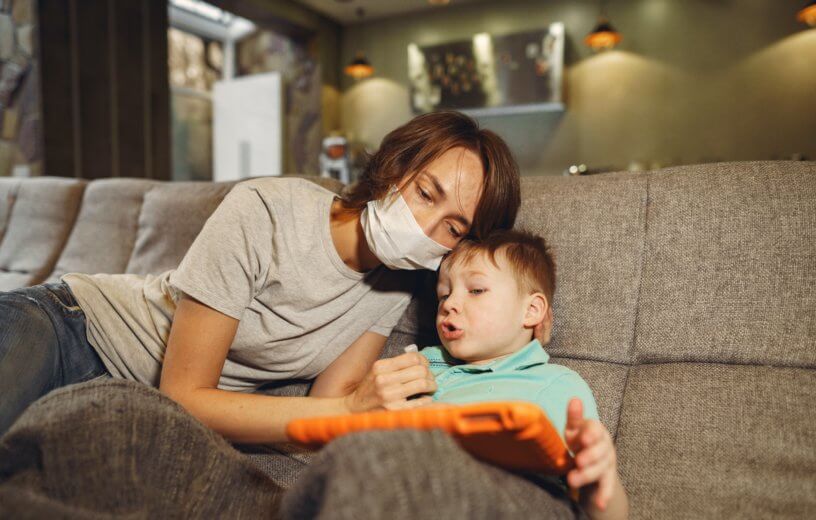BEIJING — Would you be willing to sleep with a face mask on? How about catching up on your favorite shows while keeping your nose and mouth covered? It sounds laughable at first, but a new study out of China says that wearing face masks at home is perhaps the best way to prevent COVID-19 transmission among family members or housemates.
Researchers calculate that wearing a mask at home all the time cuts the risk of in-house transmission by 79% — but, only before actual symptoms present themselves. Once an individual is symptomatic, that percentage drops considerably.
Chinese data indicates that most cases of person-to-person transmission in their country took place between family members. Up until now, however, it wasn’t clear if wearing a mask while at home effectively helped mitigate the spread of COVID-19. Furthermore, the WHO has not officially endorsed the practice of wearing masks at home either.
So, in an effort to determine if wearing a mask at home can help, Chinese researchers surveyed 460 people from 124 families living in Beijing. Each person was asked about their usual hygiene habits and behavior during this pandemic.
All of the studied families included at least one member who had tested positive for COVID-19 sometime between late February and late March. The average family size was four people, but some were as small as two while others were as large as nine people spread across a few generations.
The research team was interested to see what precautions could lessen, or increase, one’s risk of catching the coronavirus from a family member over the typical incubation period (14 days following the first sign of symptoms).
Among the studied families, coronavirus transmission from one person to another occurred in 41 out of the 124 families. In all, 77 people, both children and adults, were infected in this way, which worked out to an “attack rate” of about 23%. More specifically, around a third of studied children (36%) caught the virus from a family member and more than two-thirds of adults (69.5%) were infected as well. The vast majority of infected family members did not develop severe symptoms.
As far as what helped stop the spread of COVID-19 among family members; regularly using disinfectants, keeping windows open, and staying at least one metre away from each other were all linked to a lower risk of infection. The best ways to slow household infections were determined to be wearing a mask (a 79% reduction) and diligently using disinfectant (a 77% reduction).
It’s also noteworthy that diarrhea symptoms in the first coronavirus carrier in a household were found to increase other family members chances of catching the virus by four times. Close daily contact, meanwhile, increased family members’ risk levels 18-fold.
In conclusion, the study’s authors believe it is a good idea to wear a face mask even while at home, and say their findings are particularly relevant for any family who may have a member under quarantine or for health professionals as they return home from work.
“This study confirms the highest risk of household transmission being prior to symptom onset, but that precautionary [non-pharmaceutical interventions], such as mask use, disinfection and social distancing in households can prevent COVID-19 transmission during the pandemic,” independent of household size or crowding, the study’s authors write..
“Household transmission is a major driver of epidemic growth,” they conclude, while mentioning that their findings could be used to “inform precautionary guidelines for families to reduce intrafamilial transmission in areas where there is high community transmission or other risk factors for COVID-19.”
The study is published in BMJ Global Health.
Like studies? Follow us on Facebook!
